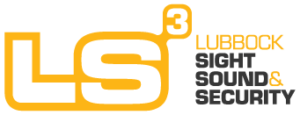Navigating the modern world requires streamlined processes, and entry management systems play a pivotal role in maintaining security and efficiency in various environments. Whether it’s an office building, school, or event venue, the right system can make all the difference. In this blog, we will explore key features that are essential for an effective entry management system.
1. User-friendly Interface
An entry management system with a user-friendly interface is akin to having a well-mapped road for drivers. Simplifying navigation not only fosters user satisfaction but also ensures efficient handling of tasks. This intuitive interface helps in cutting down the learning curve significantly, paving the way for smoother operations. It’s essential that the interface caters to users of all tech skills, avoiding complex functionalities that can overwhelm. By doing so, users can effortlessly engage with the system, minimizing the risk of errors while maximizing productivity. A simple yet effective interface caters to diverse user needs, ensuring everyone from management to maintenance personnel can operate the system with ease.
2. Scalability
Scalability represents the backbone of any resilient entry management system. As organizations grow, so do their operational needs, making it imperative for the entry system to scale in tandem. Whether expanding on a global scale or simply accommodating more employees in an office, the system should adjust without glitches. Not only does this prevent future logistical headaches, but it also saves significant costs associated with upgrading or overhauling systems prematurely. A scalable system is not just about growth—it’s about sustainable growth, ensuring consistent performance despite an increase in demand.
3. Real-time Data Access
In the realm of entry management, real-time data access is particularly valuable. Imagine receiving immediate updates about check-ins and check-outs, providing crucial insights into who is present at any given moment. This real-time capability empowers managers to act swiftly, whether it’s updating access permissions or responding to security alerts. Furthermore, the dynamic nature of real-time systems ensures that data is current and highly relevant, enhancing overall decision-making processes. With the demand for accurate, immediate information at an all-time high, real-time access proves indispensable for modern entry management solutions.
4. Robust Security Features
At the heart of entry management systems is the formidable shield of security it offers. Robust security features intertwine various elements—from encrypted data to multi-layer authentication measures—ensuring that sensitive information remains safeguarded. Encryption is particularly crucial, acting as a fortress against unauthorized access and cyber threats. Multi-layer authentication systems add an extra layer of security by requiring more than one form of verification before access is granted, thus making breaches nearly impossible. Together, these features fortify entry management systems, instilling peace of mind for organizations worldwide.
5. Customizable Settings
Customizable settings are the threads that weave personalization into entry management systems. Every organization is unique, with different needs and workflows; thus, the capacity to tailor settings ensures the system offers precisely what the business requires. Whether altering interface colors to match brand aesthetics or configuring different access levels, customization ensures the system molds seamlessly with existing company operations. This adaptability not only boosts efficiency but also amplifies user satisfaction as the system aligns perfectly with user expectations and requirements.
6. Integration with Other Systems
The magic of modern technology often lies in its interconnectivity, and entry management systems exemplify this with their ability to integrate with other organizational systems. From linking with HR databases for automatic updates of employee details to syncing with visitor management tools, integration is more than a convenience; it’s a necessity. This capability ensures data accuracy across platforms, preventing information silos and promoting a unified operational framework. As workplaces become increasingly digital, integrating various systems is key to maintaining a cohesive, efficient operational flow.
7. Visitor and Staff Management
Effectively managing both visitors and staff within an organization requires a versatile entry management system capable of handling multiple entry points seamlessly. By distinguishing between these user groups, the system can provide tailored experiences for each. For visitors, it might mean a simple check-in process with the option to pre-register, while for staff, it might involve more detailed access controls and tracking features. A comprehensive approach ensures that every individual entering the premises is accounted for, enhancing not only operational efficiency but also security through thorough tracking of all entries and exits.
8. Cloud-based Access
Entry management systems benefitting from cloud-based access gain an edge in terms of flexibility and data security. Allowing authorized personnel to manage access remotely ensures operational continuity irrespective of location. Moreover, cloud solutions provide robust security measures—think automatic updates and encrypted data storage—protecting sensitive information from external threats. This approach offers an unparalleled convenience for managing entries, making real-time adjustments possible without being tied to traditional network boundaries. Additionally, cloud solutions often provide redundancy and scalability, ensuring the system keeps pace with organizational growth and technological advancements.
9. Mobile Compatibility
With the ubiquity of smartphones, mobile compatibility of entry management systems has become a fundamental requirement. Mobile-ready systems mean that personnel can monitor and manage entries directly from their devices, allowing for immediate updates and on-the-go access management. This capability becomes particularly crucial in dynamic environments, like construction sites or events, where movement and quick decision-making are constant. By offering robust mobile features, the system ensures not just convenience, but also swift adaptability to changing circumstances, enhancing the overall efficiency of access control mechanisms.
10. Comprehensive Reporting Tools
The true worth of data lies in its interpretation, and comprehensive reporting tools within entry management systems hold the key. These tools allow organizations to glean valuable insights from entry data—be it trends in visitor numbers or anomalies in employee check-ins. Reporting capabilities equip managers with the information needed to make informed decisions and policy changes. Through detailed analytics and customizable report formats, these tools provide not just raw data, but a narrative, illuminating patterns and opportunities for optimization. Thus, reporting tools become indispensable for strategic planning and operational improvement in entry management.
11. Efficient Notification System
A well-orchestrated notification system acts as the sentinel for entry management systems. By promptly alerting relevant personnel of any irregularities, actionable measures can be implemented without delay. Whether it’s notifying staff of an unauthorized entry attempt or reminding them of visitor arrivals, notifications ensure that the right people receive the right information at the right time. This heightened layer of communication safeguards against potential security breaches while maintaining smooth operations. With notifications received via email, SMS, or app alerts, insights can quickly be communicated, ensuring immediate responsiveness and proactive management.
12. User Support and Maintenance
The enduring success of any entry management system hinges on dependable user support and diligent maintenance. Any disruptions can severely impact operations, necessitating the need for a robust support infrastructure ready to tackle issues head-on. This involves not only providing troubleshooting guidance and immediate fixes but also conducting regular system checks and updates. By ensuring everything runs smoothly and efficiently, support services significantly reduce downtime, allowing users to focus on core activities. Seamless user support and proactive maintenance preserve the integrity and functionality of the entry management system, proving essential for uninterrupted operations.





